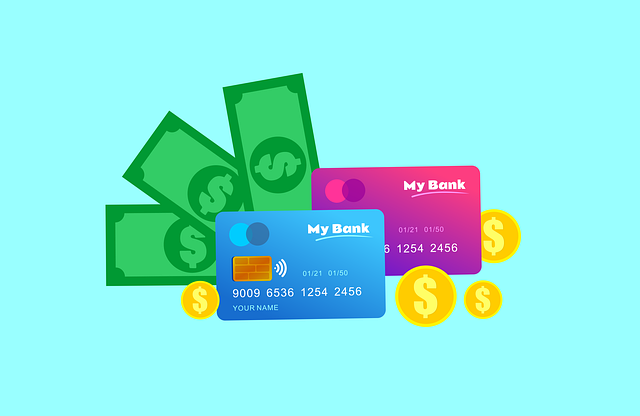Secured and unsecured loans differ in their requirements and implications: secured loans, backed by collateral like real estate, offer lower interest rates and flexible terms, while unsecured loans, free from collateral, are riskier with shorter durations and higher rates. For debt consolidation or unexpected expenses, unsecured loans simplify the process. Mortgages, as secured loans, enable long-term access to funds at potentially reduced rates for home purchases. Understanding these differences is crucial when selecting suitable borrowing options for debt consolidation mortgages, balancing risk, interest rates, and repayment terms based on individual financial health.
Understanding the distinction between secured and unsecured loans is crucial for anyone looking to manage debt, including through mortgage consolidation. Secured loans, backed by collateral, offer potentially lower interest rates but carry risk of asset forfeiture if repayment fails. Unsecured loans, lacking collateral, are more accessible but typically come with higher rates. This article explores these concepts in detail, focusing on their application in debt consolidation strategies and mortgage choices, providing insights to help you make informed decisions for financial stability.
- Understanding Secured and Unsecured Loans
- How These Loans Work for Debt Consolidation
- Key Differences Between the Two
- Choosing Between Secured and Unsecured for Mortgages
Understanding Secured and Unsecured Loans
Secured and unsecured loans are two different types of financial instruments that people often use to borrow money, each with its unique characteristics and implications. Secured loans, as the name suggests, are backed by a form of collateral or security. This could be a valuable asset such as real estate (in the case of mortgages) or personal property like a car, or even investments. The lender holds this collateral until the loan is fully repaid, which typically involves lower interest rates and more flexible terms for borrowers. Unsecured loans, on the other hand, don’t require any collateral, making them riskier for lenders. These are often short-term borrowing options with higher interest rates, suitable for immediate financial needs like debt consolidation or unexpected expenses.
Understanding these distinctions is crucial when considering borrowing options. For instance, if you’re looking to consolidate multiple debts into one manageable loan, an unsecured loan might be more appealing due to its simplicity and faster approval process. However, if you’re purchasing a home, a secured loan such as a mortgage will be necessary, providing long-term access to funds at potentially lower rates.
How These Loans Work for Debt Consolidation
When considering debt consolidation, both secured and unsecured loans play distinct roles in helping individuals manage their debt. Secured loans, such as mortgages, require borrowers to put up collateral—typically a home or other valuable asset—to guarantee repayment. This adds an extra layer of security for lenders but also means borrowers risk losing their collateral if they fail to make payments. In the context of debt consolidation, a mortgage can be used to pay off multiple high-interest debts, offering a lower overall interest rate and simplifying repayment.
Unsecured loans, on the other hand, don’t require collateral and are based solely on the borrower’s creditworthiness. They’re generally easier to obtain but come with higher interest rates compared to secured loans. These loans can also be used for debt consolidation, allowing borrowers to combine their debts into a single monthly payment. However, because they lack collateral, lenders may conduct more thorough credit checks, and borrowers face the risk of default without a compelling financial strategy.
Key Differences Between the Two
When considering a loan, whether for debt consolidation or mortgages, understanding the distinction between secured and unsecured options is paramount. The primary difference lies in the collateral involved. A secured loan requires borrowers to offer an asset as security, such as property or a vehicle. This acts as a safeguard for the lender, ensuring repayment through potential seizure of the collateral if the borrower defaults. In contrast, unsecured loans carry no such collateral, making them riskier for lenders but offering borrowers greater flexibility since they don’t tie up assets.
Secured loans often feature lower interest rates and more favorable terms due to the reduced risk for lenders. Conversely, unsecured loans may have higher interest rates and shorter repayment periods as a balance for the increased risk. This means borrowers should carefully consider their financial situations and goals before choosing between these loan types, weighing the benefits and drawbacks based on their ability to repay without sacrificing valuable assets.
Choosing Between Secured and Unsecured for Mortgages
When considering a mortgage, whether secured or unsecured, it’s crucial to understand the implications for your financial journey, especially when looking at debt consolidation options. Secured loans are backed by an asset, typically real estate, which acts as collateral. This means if you fail to repay, the lender has the right to seize and sell this asset to recover their losses. As such, secured mortgages often offer lower interest rates and more flexible terms, appealing to borrowers looking for long-term savings and stability.
Unsecured loans, on the other hand, do not require collateral but come with higher interest rates due to the increased risk for lenders. These are ideal for those who don’t own property or prefer not to use an asset as security. Unsecured debt consolidation mortgages can help simplify multiple debts into a single repayment, providing better management and potentially saving on overall interest charges over time. The choice depends on individual financial health, goals, and the specific terms offered by lenders.
When considering debt consolidation mortgages, understanding the distinction between secured and unsecured loans is pivotal. Secured loans, backed by an asset like real estate, offer potentially lower interest rates but carry the risk of foreclosure if repayment fails. Unsecured loans, lacking collateral, provide greater flexibility but generally come with higher interest rates and stricter borrowing limits. For effective debt consolidation, evaluating your financial health and comparing offers from various lenders is crucial to making an informed decision that aligns with your mortgage goals.
